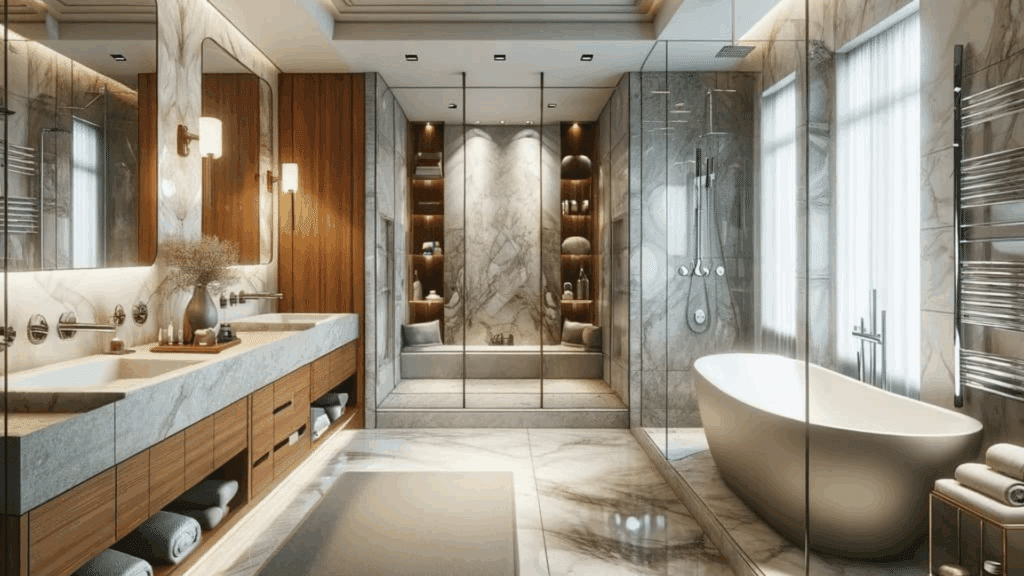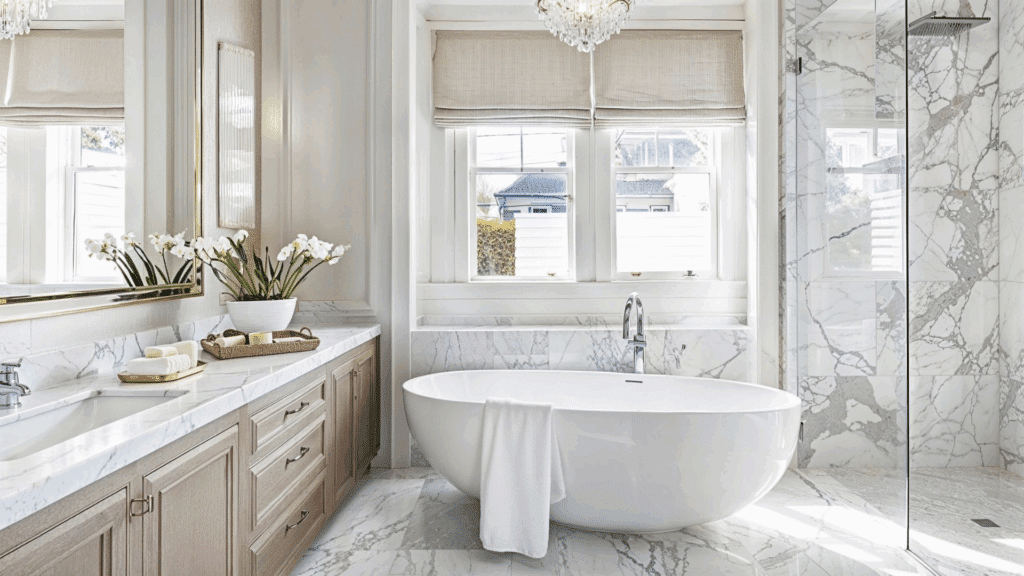Adding a new bathroom is one of the most useful home upgrades you can make.
If you need extra space for a growing family or want more comfort for guests, it can make daily life easier.
But the big question many homeowners ask is, How much does it cost? The truth is, the bathroom addition cost can vary a lot depending on the size, design, and location.
I remember when I looked into adding a bathroom to a house, I was surprised by all the little expenses that added up.
Some people keep it simple with a half bath, while others go all out with a full or luxury space.
We will look at the real costs, important factors, and tips from other homeowners so you can plan with confidence.
Why Cost Planning is Crucial for a Bathroom Addition?
When planning to add a bathroom, cost is one of the biggest factors to consider. Without clear numbers, it is easy to overspend or run into surprises that stretch your budget.
A new bathroom can make life more comfortable for your family, but it also affects the overall value of your home.
Knowing what to expect ahead of time lets you decide if you want a simple powder room, a standard full bath, or a luxury design.
It also helps you choose between needs and wants, making it easier to prioritize.
By understanding bathroom addition costs early, you will feel more confident and prepared when it’s time to make decisions and hire contractors.
Factors That Influence Bathroom Addition Costs
The price of adding a bathroom is not the same for everyone. Different choices and conditions can make the total cost go up or down.
- Location: Where you place the bathroom matters. Adding one in a basement or garage usually costs more than near existing plumbing or upstairs spaces.
- Size & Layout: A small half bath is cheaper, while a larger full bath with a shower or tub costs more. Layout changes also raise overall expenses.
- Plumbing & Electrical Work: Connecting to existing pipes and wires saves money. Moving plumbing or adding new electrical systems costs more and often takes extra time.
- Materials & Fixtures: Basic sinks, tiles, and toilets are affordable. Luxury finishes like marble, custom showers, or high-end vanities increase bathroom addition cost quickly.
- Labor & Permits: Contractors, plumbers, and electricians all add to costs. Permits and inspections also vary by location, raising prices in some regions.
Each factor plays an important role in the final price. Thinking about them ahead of time can help you stay within your budget.
Cost Breakdown for Bathroom Additions
Bathroom addition costs vary widely. Prices depend on bathroom type, size, and features, from basic powder rooms to luxury spaces.
1. Half Bath (Powder Room)

A half bath, or powder room, usually has only a sink and a toilet.
It is the most affordable bathroom addition because of its small size, simple design, and limited plumbing needs, making it easier to fit in tight spaces.
- Average Cost Range: $5,000 – $15,000
- Square Footage Needed: 15–25 sq. ft.
- Key Considerations: Building near existing plumbing keeps costs down, while compact vanities and wall-mounted sinks save space and add style affordably.
2. Full Bathroom

A full bathroom comes with a sink, toilet, and either a shower, a tub, or both.
It adds big value and usefulness to a home, but the total cost depends on fixture choices and layout needs.
- Average Cost Range: $15,000 – $35,000
- Square Footage Needed: 40–60 sq. ft.
- Key Considerations: Beyond installation, you will need waterproofing, tiling, and proper wiring. Storage solutions like built-in cabinetry also affect overall price and functionality.
3. Luxury Bathroom Additions

Luxury bathrooms create a spa-like space with premium features and top materials.
They often include high-end finishes like heated floors, rainfall showers, and custom cabinetry, offering comfort and style but requiring a much larger budget and longer build times.
- Average Cost Range: $40,000 – $75,000+
- Square Footage Needed: 70–120+ sq. ft.
- Key Considerations: Custom finishes increase beauty and resale value, but specialized installations take longer and often push project timelines and budgets higher.
Unexpected Bathroom Addition Expenses
Unexpected costs can surprise homeowners and quickly push a bathroom project over budget. Common issues include plumbing reroutes, structural changes, or moisture control problems, making it important to plan for extra expenses before starting construction.
Examples of Hidden Costs: Extra charges that can quickly raise bathroom costs.
| Expense Type | Estimated Cost Range |
|---|---|
| Plumbing reroutes | $1,000 – $5,000 |
| Structural changes | $2,000 – $10,000+ |
| Ventilation upgrades | $400 – $1,500 |
| Waterproofing/insulation | $1,000 – $3,000 |
Key Considerations: Plumbing, structure, and ventilation can add unexpected expenses. Setting aside 10–20% of your budget helps cover these surprise costs.
Voices from Homeowners: Real Experiences
Homeowners who have actually added bathrooms share their real-world experiences and costs.
One person spent about $11,900 total for their DIY bathroom project, $5,000 for plumbing, $900 for electrical work, and $6,000 for materials like vanity, tiles, and fixtures.
They called it moderate quality, not high-end, not low-end.
Another homeowner did most work themselves and spent around $9,000 total, including $2,000 for vanities, $3,000 for tile, and $1,500 for shower doors.
Professional contractors gave quotes ranging from $6,000-$10,000 for basic work, but some homeowners reported much higher costs, up to $25,000-$40,000, depending on location and project complexity.
Most agreed that labor costs often double the material costs.
For more detailed discussions and homeowner experiences with bathroom addition costs, visit the Reddit.
Smart Ways to Save on Bathroom Addition Costs
Saving money on a bathroom addition is possible. With smart planning and choices, you can lower costs without losing quality.
- Place the bathroom near current plumbing lines to save money on extra pipe work.
- Choose mid-range fixtures that look nice, last long, and don’t cost too much.
- Reuse or repurpose cabinets, tiles, or mirrors to cut costs without losing style.
- Collect quotes from several contractors to compare prices and find the best value.
- Do small DIY tasks like painting or tiling, but hire pros for complex jobs.
A smart approach saves money and stress. Plan ahead, spend wisely, and enjoy a bathroom that fits your budget.
Conclusion
Adding another bathroom is not just about comfort; it is also about making life easier for everyone in your home.
Whether it is a small powder room for guests or a full bath for family use, this upgrade can bring daily convenience and long-term value.
While the price may seem high at first, thinking ahead and setting a clear plan can help avoid stress later.
Focus on what features matter most to you, and do not be afraid to adjust your design to fit your budget. Even simple choices, like keeping the layout practical, can make a big difference.
Take the first step today by planning your space and finding cost options that match your goals.

